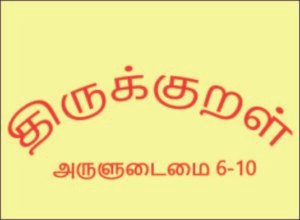Navratri and Durga Puja
Navratri, the festival of nine nights, begins on Saturday, the 17th of September this year. In today’s podcast, we’ll look at the religious significance of Navratri and Durga Puja and how it is celebrated in different parts of India.
Did you know that there are six Navratris observed by Shakti tradition? Of these, four are very popular. They are
- Varahi Navratri
- Sharada Navratri
- Vasantha Navratri
- Shyamala Navratri
These celebrations actually follow the lunar calendar.
During Navratri, the Supreme Mother, Shakthi, the embodiment of love, energy, and kindness is worshipped in many ways.
Mahishasura, the buffalo-headed demon, had obtained a boon from Brahma that no man or Deva could kill him. This boon made Mahishasura very powerful! He made life impossible for the common people, sages, devotees, and Devas. It became so bad that the Trinity, Shiva, Vishnu, and Brahma decided that something had to be done to stop Mahishasura.
But how can they stop the asura who couldn’t be killed by man or Deva earth? See, this is where Brahma had made sure that there would be a way out. Mahishasura forgot to include that he should be protected from women as well. He was so sure that no woman could defeat him that he asked that no man or deva could kill him! Not very thorough, was he? Together, the Trinity invoked the Supreme Mother, Shakthi as Durga, to destroy the asura. Durga had all the power and energy of Saraswathy, Lakshmi, Parvati, and all the other Shakthis. Have you seen Durga holding weapons in each arm? The other deities gave her their weapons.
From Shiva, she got her trishul or trident; from Vishnu, his Sudarshan Chakra; and Brahma, his lotus, to symbolize wisdom.
Durga also holds Vajra, the thunderbolt, a conch, a sword, a bow and arrow, a mace, an axe, and a snake. Indra gave the Vajra (Vajrayudham), while Varuna gave the conch (shangu). Ganesha gave her the sword, Vayu the bow, and Surya the arrow. Agni gave her the spear (Vel). Vishwakarma gave Durga the axe, and finally, Shiva gave her the snake.
She was armed with the energy and wisdom to destroy the asura, but Durga made a fearsome sight riding a lion. Now, Mahishasura was definitely not expecting a woman. He laughed when he saw her and sent his generals to fight her. One by one, Durga defeated them all. When Mahisha finally came to fight with her, he changed forms and created illusions to trick her. Durga was more than his match. She, too, changed forms. That is why we see various forms of Durga as Chandika, Varahi, Bhadra Kaali, and Mathangi. The fight lasted nine nights. On the tenth day, Devi Durga killed Mahishasura with her Trishul, i.e., a trident.
When the Evil asura was finally destroyed, the Devas and other celestial beings sang in praise of Durga, the supreme energy.
It is also believed that lord Ram observed Navratri before he went to defeat Ravana and rescue Sita.
As with most festivals in India, different traditions are followed to celebrate Navratri. There is prayer, dancing, singing, good food, a gathering of family and friends, and yes, lots and lots of colour.
In North India, Navratri is observed by Jagran or Keeping vigil at night to worship the Devi. The state of Gujarat has one of the more well-known forms of worship during Navratri. Have you ever danced the night away with your dandiya sticks? Garba and Dandiya are both dances from Gujarat performed during Navratri. These are large gatherings where people get together to dance and worship Amba.
For West Bengal, no other festival is more important than Durga Pujo, where devotees keep a night vigil (Jagran), fast during the day, and recite the Durga Saptasathi. You can see magnificent Pandals with various sculptures of the Goddess where the public witnesses the Pujo celebrations.
In the south, the first three days are meant for Durga Puja, the next three days for Lakshmi, and the last three for Saraswathy. It is a great time for socializing. Okay, here’s a really cool fact. The ninth day of Navratri is celebrated as Saraswathi Puja. On this day, in Tamil Nadu, in families that celebrate Navratri, children have to put away all their books, notebooks, pencils…anything to do with studies in front of the Goddess and actually not study! This is the one day in the year that parents tell the kids ‘Don’t Study”! Are you wishing for more days like that?
Saraswathy Puja is also known as Ayudha Puja. This is the day when every instrument or anything that is used in people’s livelihood—from the smallest tool to large equipments in factories are offered prayers. If you are out and about in Tamil Nadu on the Audha puja, don’t be surprised to see autos, buses, cycles, shops, potter wheels…anything people use to earn a living decorated and worshipped.
After a day of rest comes the day of New Beginnings. The tenth day is Vijayadasami or the victorious tenth day. It is common for new businesses to be launched on Vijayadasami, and in the past, young children would be enrolled in school on this day. On this day, many families initiate young children into learning through a ceremony called Aksharabyasam. Children between the ages of two and three are taught to write the letters on a tray of rice.
A very common tradition in South India is the bomma kolu. Kolu means darbar or grand hall. Bomma means dolls or replica idols. Bomma kolu is made to look like Devi Durga’s darbar. Kolu is a display of all idols on steps. The number of steps you arrange depends on your space and capacity. Most people keep a nine-step kolu. The bottom-most step holds trees, animals, and shells. The one above displays houses, people and their ceremonies.
The scenes from the epics are displayed in the other steps. The topmost step is for the images of gods and Durga. Women and children are invited to view the Kolu. They are given small gifts and sundal, a type of snack made from different types of beans. People sing Navratri songs or songs on Devi when they go to view the golu.
In Karnataka, Dussehra is celebrated in a grand manner. Families celebrate Navratri, worshipping Devi in all her forms. On Dussehra, or the tenth day, a traditional procession carrying the idol of Chamundeswari weaves through the city of Mysore. This is a brief introduction to Navratri celebrations in India.
Click here too for more on Navratri and Durga Puja:





